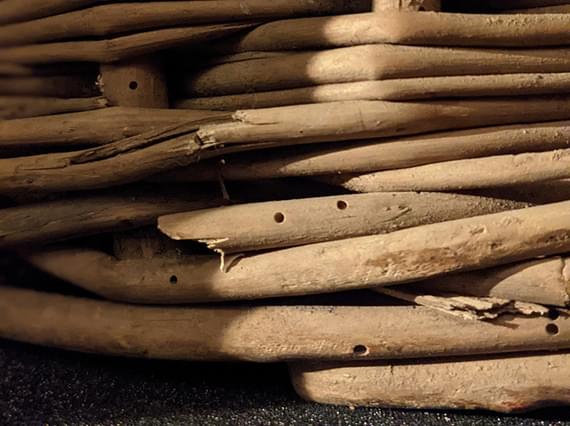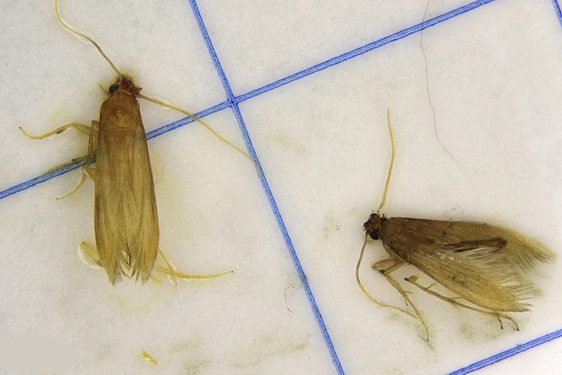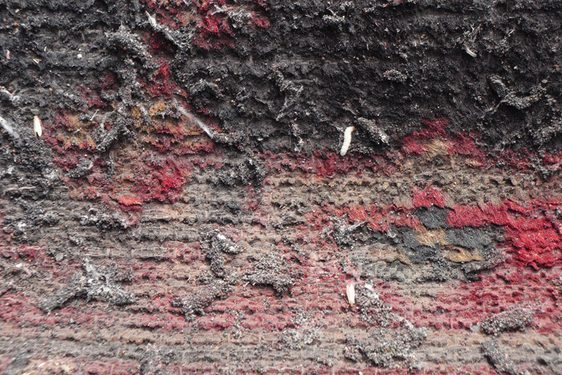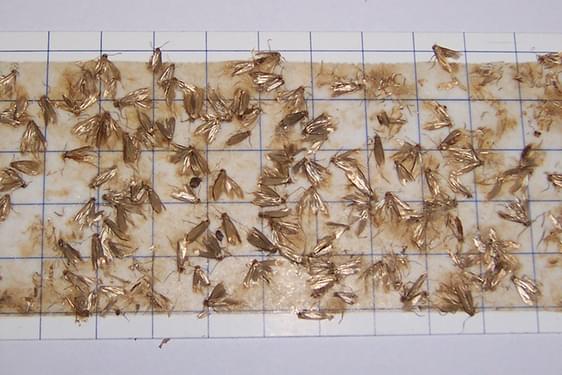
How to prevent infestation
Preventing Infestation
The best way to prevent infestation is to stop pests entering your collection. This is most effectively achieved by pest proofing and maintaining buildings, limiting food sources, and quarantining collections at point of arrival.
The steps set out below require all those who work in your buildings to play a role. Find a way to share this information with them and consider using posters or notices to remind people of what to do in specific areas, for example “Don’t feed the pests” posters in collection stores explaining why there is no eating in collection areas and who to contact with questions.
Building Maintenance
Proofing the building to prevent pest access is important. Access could come via several routes.
Ensure that:
- Windows are well sealed, and in collection areas, are not opened.
- Doors, internal and external are well sealed. Brush strips are a useful way of achieving this. And ensure doors into collection areas are open for the minimal amount of time.
- Chimneys are capped if not in use, and there is no access for birds or their nests in chimney spaces. Feathers are a tasty source of food to some insects which could migrate to eating collections.
- Ledges and rooves do not provide nesting spots for birds. Consider spikes on external windows sills.
- Pipes and air-conditioning do not provide access points for insects and rodents. Also ensure these do not provide access through a building, if infestation were to occur in one area it should be prevented from travelling through the building in air conditioning ducting by appropriate filters.
Good Housekeeping
Dust, debris, and damp encourage pests. Buildings should be clean and dry to deter pest activity.
Ensure you have regular cleaning regimes in place throughout your buildings and particularly in collection areas. Identify any spaces that are hard to clean including what's known as ‘dead spaces’. These can be areas under plinths in galleries or behind cabinets in stores.
Dead spaces can become a haven for dust and attract pest activity, so it is important to find a way to access and clean these areas on a regular basis. It may also be useful to highlight areas of buildings which are prone to damp or leaks, such areas may experience high humidity levels, resulting in an ideal climate for pest habitation.
Where resources are tight, a programme of focused annual deep cleans with a dedicated team and the right equipment to access hard to reach areas is a good way to ensure all areas are cleaned at least once a year including dead spaces.
When cleaning use equipment that will remove dirt, for example vacuum cleaners and microfibre cloths, this will ensure you remove dust and debris rather than simply transferring it from one area to another.
Consider how human food is consumed and stored in your buildings. Designate specific areas for food storage and consumption (staff and public) and implement strict and regular cleaning regimes in these areas. Ensure food is stored in air-tight containers to prevent rodents and insects accessing it.
Think about other materials that might come into the building, for example craft materials for events, or that jumper hanging on the back of the office door for when the heating breaks.
Quarantine
Items entering your buildings can carry pests with them.
Quarantining is the act of isolating objects or materials from the rest of the collection, until you are satisfied the risk of them carrying any infestation is reduced to an acceptable level. Always consider:
- Museum objects – new acquisitions, incoming loans and returning loans. Pests can travel in the object or in the packaging around the object.
- Events and education – items brought in for workshops and events that could harbour pests.
- Shops – many shop items are likely to be synthetic, but you may find some natural textiles or other edible materials such as sweets and chocolate that can attract rodents.
The method by which this is achieved will depend on what the item or material is, where it has come from and its destination.
- Material composition of the item – is it made largely from an organic material attractive to pests, for example wool or wood? Or is the item largely synthetic or metal?
- Where it has been – has the item been stored somewhere that could have been damp (a donor’s attic or a warehouse) and therefore a higher pest risk? Or is it coming from a known location (another museum, that can tell you if there are any pest problems or not)?
- Destination – is the item going into a store with many other highly edible collections, or is it to be used in an education room remote from objects? For example, a donation of a textile item, previously stored in the donor’s house, and destined to be stored alongside other textiles will be treated with much more caution than synthetic yarn to be used in a family education project that will take place in a discreet room (with no objects).
At National Museums Scotland our collection is particularly vulnerable to a range of pests. For this reason, we implement strict quarantine protocols for anything moving into any collection area including a collection store, conservation laboratory, photography studio or a gallery, regardless of material or originating location. We consider shop items and educational materials on a case-by-case basis.
Objects and items entering quarantine can be managed in a number of ways:
- The Object Treatment section below sets out treatments to consider when an object shows sign of infestation, or for when you need to be absolutely positive the object is pest free before it enters a specific area (for example a new textile acquisition entering a textile store)
- Visual inspection involves a careful examination of the object for any signs of insect activity. This is a suitable treatment for inorganic objects, which present a very low risk for pest activity but may carry pest on them or in their packaging if they have come from an infested space.
- Isolation where the object is contained completely separate from the rest of the collection for a period of six months. For example, sealed entirely in polythene. Isolation is the simplest way to manage the risk of pest, and as long as you remember to check the object on a regular basis (you don’t want to return to find it eaten up), it is generally considered safe to apply across most types of objects. Remember to clearly label the isolated object so you can identify it and the date isolation started.
Packaging material can also harbour pests. At National Museums Scotland, when we process objects through quarantine, we remove packaging if we think there is a chance it could be infested. Clean objects are packed in clean materials before they leave quarantine. Or, where we are treating collections by freezing them (low temperature treatment) objects are frozen with the packaging. Packaging from external sources can be frozen, even if the object cannot be treated in this way, and then this packaging can be re-used.
Establish Your Own Quarantine Protocols
Consider the pest risks associated with your collection to inform what items should pass through quarantine taking into account the type of collection you care for and how attractive (and vulnerable) it is to pest.
Consider what treatment protocols you need and any equipment or training required to implement these. If your resources are tight, see if you can send objects out for treatment if required or hire equipment short term. At National Museums Scotland, we hire additional freezers when we need to treat large groups of collections moving into or between stores.
Set up a quarantine area, or areas, to receive, check and treat items before they move into collection areas. At National Museums Scotland we are lucky to have a dedicated quarantine room with equipment and space to act as the primary quarantine area for the majority of our collection. However, you do not always need a large area. You simply need a space you can check and, if necessary, seal an incoming object in polythene until you are sure it is pest free. This will allow you to prevent spread of any possible infestation to the rest of the collection which is the principle aim of quarantine.
The principle things to have in your quarantine area are: a clean space that is easy to keep dust and debris free; a table or bench to inspect items; pens and labels to document items moving through quarantine; tools to unwrap and wrap items; clean packing materials and polythene; sealed waste bins to isolate dirty unusable packaging materials; and if you have space, racking to hold wrapped isolated objects. A torch or work light and magnifier are also useful tools to have.
More sections in this training

How to identify pests
We can describe a museum pest as an animal that will in some way cause harm to museum collections.
How to deal with infestation
A good way to deal with any possible pest discoveries is to ask a number of questions about what you have found.
How to monitor pests
Infestations are much easier and cheaper to deal with if you catch them early.